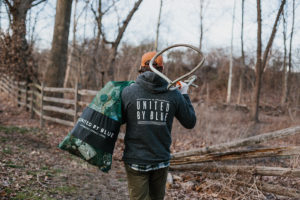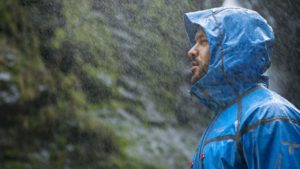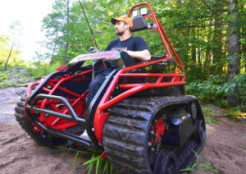The Perfect Gear Guide for Summiting The Matterhorn
The Matterhorn. Just say the name and your mind is likely to conjure all sorts of tales from its treasury of climbing mythology – accompanied, no doubt, by an image of what might just be the most iconic mountain in the world. Skewering the Valais and Valtournenche skyline with its unmistakable, pyramid-like form, this highly-photogenic apogee of European alpine aspirations is one that has allured tens of thousands of climbers since first summited in 1865. Over the last 150 years, It has been as much a regular feature on the ’must-do’ lists of the greats of the climbing pantheon as it has those of your average weekend enthusiast (the author included).

At 14,692ft, the Matterhorn is also one of the highest mountains in Europe and a serious challenge for its would-be summiteers. Whether climbing the more popular Hörnligrat route or the less frequented Cresta del Leone route from Valtournenche in Italy (where the locals will thank you for referring to their pride and joy as “Il Cervino”!), it is an undertaking not to be underestimated or embarked upon without the right gear and clothing. With hundreds of deaths in its mountaineering history and several in the last twelve months alone (including two from exposure), this of all mountains is one where getting your kit right is nothing short of imperative.
Below, we take you through a list of the bare essentials required to maximize your chances of summiting one of planet earth’s most coveted and alluring peaks in as safe and enjoyable a manner as possible – without breaking either your back and/or bank account in the process.
The Bare Essentials
Boots

Crampons

Hybrids: Grivel G12 New Classic ($174.95)
Step-in: Grivel G12 Crampomatic Crampon ($157.99)
Axes

Helmet

Backpack

Clothing

- Two pairs of dexterous, articulated gloves: one insulated pair with full leather palm and fingers, one with even greater dexterity and grip for belaying.
- Insulated: Rab Baltoro Glove ($79.95)
- Belaying: Black Diamond Crag Glove ($49.95)
- Glove liners: Black Diamond Lightweight Glove Liners ($24.95)
- High-quality glacier sunglasses: Julbo Sherpa Glacier Sunglasses ($39.99)
- Softshell pants: Salomon Equipe Soft Shell Pants ($76.93)
- Softshell jacket: Black Diamond Dawn Patrol Soft Shell Jacket ($179.73)
- Base layer pants: Underarmour Base 2.0 Leggings ($26.73)
- Base layer top: REI Baselayer Top ($39.95)
- Lightweight down jacket (not expedition weight): Mountain Hardwear Ghost Whisperer Down Jacket ($244.93-$350)
- Gaiters: Outdoor Research Crocodile Gaiters ($80)
- Waterproof jacket: Black Diamond Mono Point Shell ($193.73)
- Waterproof pants: Patagonia Torrentshell Pants ($99)
Technical Gear*

- Belay device – modern tube-style preferable: DMM Pivot Belay Device ($34.95)
- Nuts and nut key – higher on the mountain, both routes become very exposed and the grade of climbing between the fixed ropes is higher than most would feel comfortable taking on unprotected. A decent-sized rack would give you the (recommended) option of additional protection without overdoing things weight-wise. Don’t be tempted to take friends (cams), which are liable to freeze up in sub-zero temperatures. Try: DMM Nut Rack ($107.99)
- Rope – 50m for a team of up to four, 30-35 m for a two-man party. Black Diamond 9.9mm Climbing Rope ($79.95)
- Harness with gear loops and adjustable leg loops: Black Diamond Momentum Harness ($54.95)
- Locking carabiners (x 3): Black Diamond Locker ($8.73)
- Non-locking, wiregate carabiners (x4): Black Diamond Neutrino Wiregate Carabiner ($4.73)
- Figure-of-eight descender: Fusion Figure of 8 Descender ($16.95)
- Prussik loops (x2)
- Daisy chain and sling: Camp U.S.A. Daisy Chain Twist ($34.95), Mammut Contact Sling ($8.95-$14.95)
Miscellaneous
- Sunscreen and lip balm – the reflection from the alpine sun on the snow at this altitude can frazzle your skin in no time. A good factor 50 will keep you protected. Piz Buin Mountain 50 Sunscreen and Lipstick ($20.57)
- Headlamp (with extra batteries): Black Diamond Spot Headlamp ($31.93)
- Sun hat or bandana: Liberty Mountain Bandana ($2.99)
- Collapsible trekking poles. Though not essential, these will come in handy to power your ascent and help you stay balanced over less steep rocky sections. The smaller they collapse to, the better. Black Diamond Trail Back Trekking Poles ($79.95)
- Ski goggles for windy conditions: Smith OTG Snow Goggles ($65)
- Ice screws if climbing in fall or early spring: Black Diamond Turbo Ice Screws ($39.95-$84.64)
- Compass: Suunto M-3 D Leader Compass ($40)
- Ear plugs for the hut: Mack’s Earplugs ($3.76)
- Water bottle: Kleen Kanteen Wide Mouth Bottle ($15.71)
- Swiss Francs.
- Insurance details and paperwork
- Common Sense – As with any expedition in the high mountains, keeping your wits about you and a level head is of the essence. The weather fronts that swarm the Matterhorn at times can be both scary and treacherous. If you see one heading in, don’t hesitate to pull this most indispensable tool from your reserves and get down to safety as soon as possible.
In boca lupo, as the Italians say, or, as the Swiss say, Viel glück!
*The above list is offered on the assumption that you will be climbing without a guide. If using a guide – highly recommended – much of the technical equipment will probably be supplied. Be sure to double-check with your guide first!
















No Comment